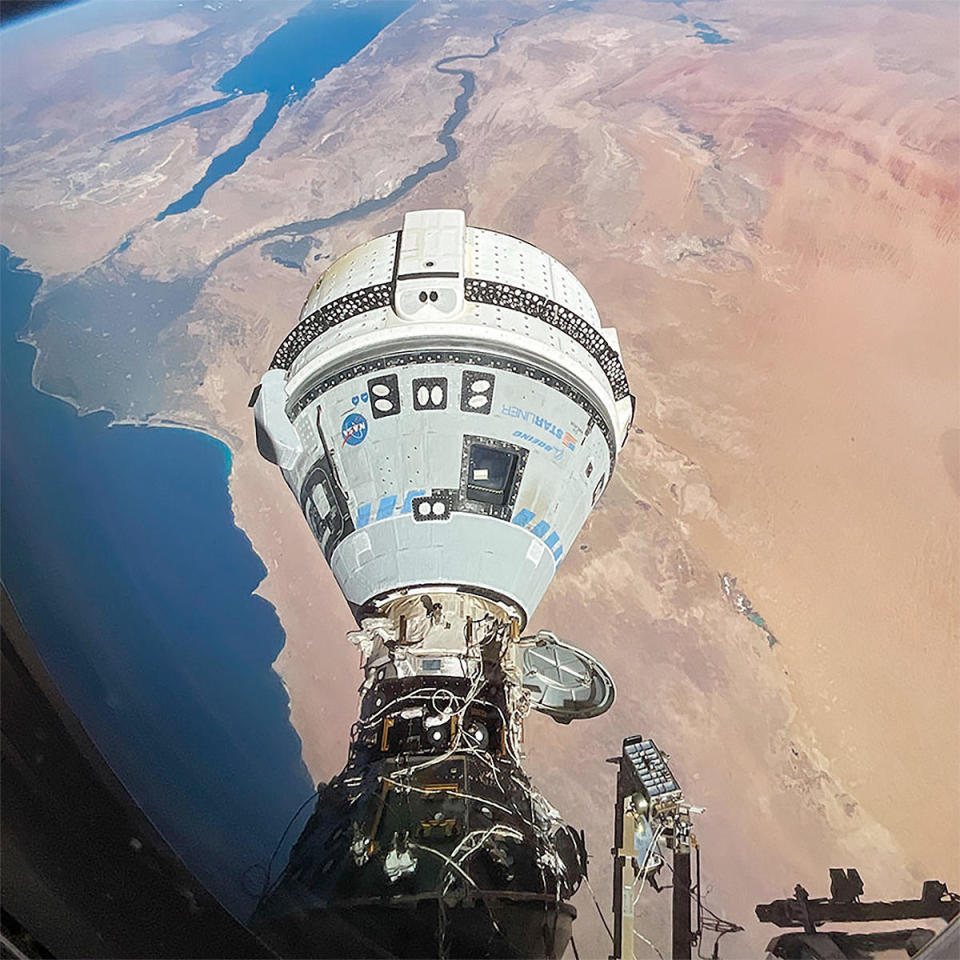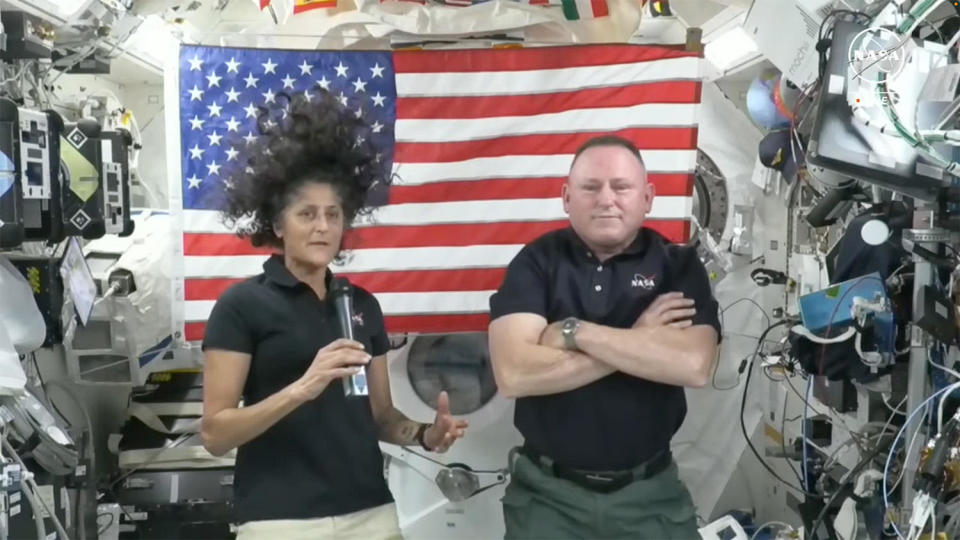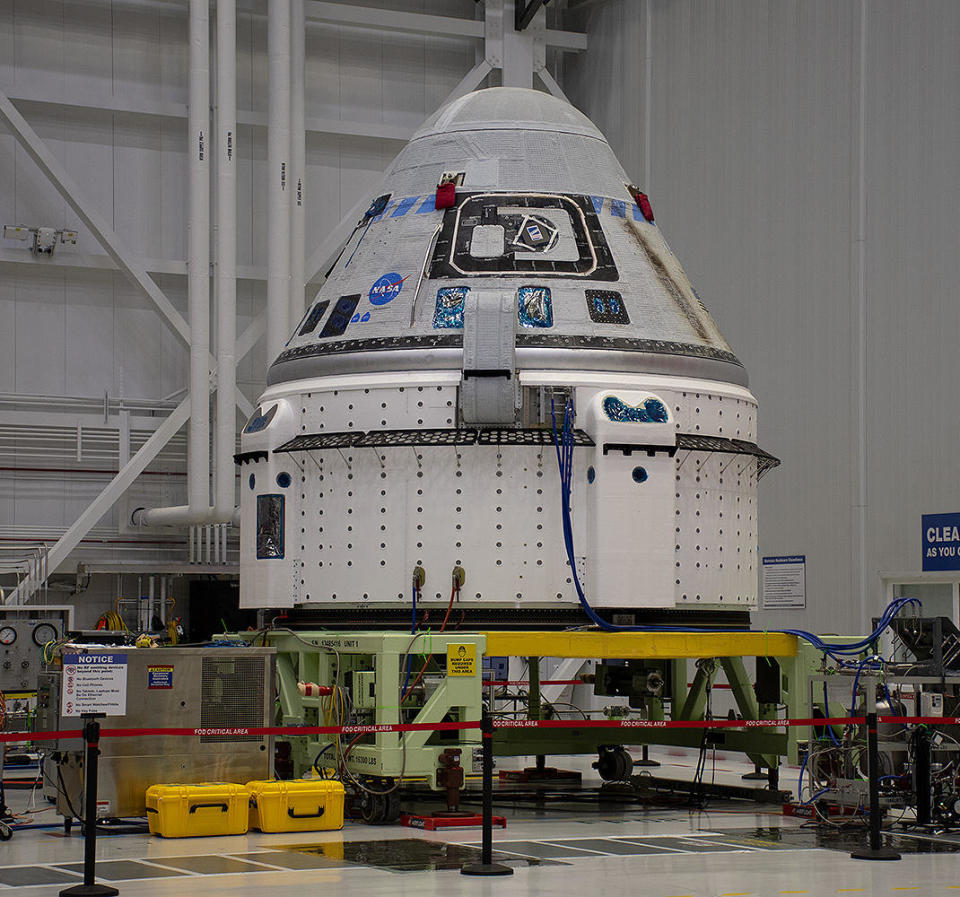While NASA debates the safety of Boeing’s Starliner spacecraft After multiple helium leaks and problems with the boosters, the agency is becoming “more serious” about an emergency plan to bring the ship’s two crew members to land back to earth aboard a SpaceX Crew Dragon, officials said Wednesday.
In that case – and no final decisions have been made yet – Starliner commander Barry “Butch” Wilmore and co-pilot Sunita Williams would remain on board the International Space Station for another six months and come down with a Crew Dragon scheduled to launch on September 24 to bring long-serving crewmembers to the outpost.

Two of the four “Crew 9” astronauts already assigned to the Crew Dragon flight would be removed from the mission, and the ship would launch with two empty seats. Wilmore and Williams would then return to Earth in February with the two Crew 9 astronauts.
Shortly before Crew Dragon launch, the Starliner would undock from the forward port of the space station and return to Earth under computer control, without astronauts on board. Crew Dragon would then dock at the vacant forward port.
Two previous Starliner test flights were conducted without crew, and both landed successfully. The current Starliner’s computer system would need to be updated with new data files and flight controllers would need to refresh procedures, but that work could be done in time to support a mid-September return.
If that scenario plays out, Wilmore and Williams would end up spending 268 days (9.7 months) in space, instead of the week or so they had planned when they launched into space on June 5 aboard a United Launch Alliance Atlas 5 rocket.
Given the uncertainty about the exact cause of the thruster problems, “I would say the likelihood of an unmanned return of Starliner has increased slightly, based on developments over the last week or two,” said Ken Bowersox, NASA’s director of space operations.
“That’s why we’re now looking more closely at that option, to make sure we can handle it.”
But he cautioned that no final decisions will be made about when and how to bring the Starliner’s crew home until the agency completes a high-level flight readiness review.
No date has been set yet, but it could happen late next week or the week after.
“Our first option is to send Butch and Suni back to Starliner,” said Steve Stich, manager of NASA’s Commercial Crew Program. “However, we’ve done the necessary planning to make sure we have other options open. We’ve worked with SpaceX to make sure they’re ready to send Butch and Suni back to Crew 9 if we need them to.”
“We haven’t approved this plan (yet). We’ve done all the work to make sure that this plan is in place … but we haven’t formally enabled it yet. We wanted to make sure that we had all that flexibility.”
Before the Starliner launched, NASA and Boeing engineers were aware of a small helium leak in the spacecraft’s propulsion system. After ground testing and analysis, the team concluded that the ship could be safely launched as is.


However, the day after launch, four more helium leaks occurred and five rear-facing maneuvering engines failed to function as expected. Since then, NASA and Boeing have been conducting data reviews and ground tests to determine the cause of both problems.
The Starliner uses pressurized helium to push propellants to the boosters, which are crucial to keeping the spacecraft properly oriented. This is especially important during the de-orbit brake “burn” using larger rocket engines to slow the spacecraft for re-entry into the atmosphere and landing on target.
To make Starliner suitable for a crewed return to Earth, engineers must develop an acceptable “flight rationale” based on test data and analysis. This must provide confidence that the ship can survive the reentry and landing with the required level of safety.
“The Boeing team (is) very confident that the vehicle can bring the crew home right now, given the uncertainty that we have,” Bowersox said. “But we have other people who are probably a little more conservative. They’re concerned that we don’t know for sure, so they’re sizing up the risk and recommending that we don’t go home (on the Starliner) because we have another option.
“So that’s part of the discussion that we’re having now. But again, I think both positions are reasonable with the uncertainty band that we have, and so we’re trying to reduce that uncertainty.”
Boeing continues to maintain that the Crew Dragon contingency plan is not necessary and that tests and analysis of helium leaks in the Starliner’s propulsion system and initial maneuverability issues with the thrusters show that the spacecraft has more than enough margin to return Wilmore and Williams safely to Earth.
Boeing says the helium leaks are known and have not gotten worse. There is more than enough pressurized gas on board to power the engines needed to maneuver and stabilize the spacecraft during the critical deorbiting, atmospheric reentry, and landing maneuvers.
Engineers also now believe they understand what caused a handful of rear-facing jets to overheat and fire at lower thrust than expected during the rendezvous with the space station, causing the Starliner’s flight computer to shut them down during approach.
Ground tests of a new Starliner thruster, fired hundreds of times under conditions similar to those experienced by people aboard the spacecraft, showed similar overheating, likely caused by multiple firings during tests of the capsule’s manual flight control system during prolonged exposure to direct sunlight.
The higher-than-expected heating likely caused small seals in the thruster valve poppets to deform and expand, the analysis found, reducing the flow of fuel. The thrusters aboard Starliner were tested in space under more normal conditions and all functioned properly, indicating that the seals had returned to a less intrusive configuration.
There are new procedures to prevent the overheating that occurred during the rendezvous. Additional manual test shots are excluded, no long exposure to the sun is planned and less frequent shots are needed before the departure of the station compared to the rendezvous.


In a statement Wednesday, Boeing said: “We continue to believe in Starliner’s capabilities and flight rationale. If NASA decides to change the mission, we will take appropriate steps to configure Starliner for an unmanned return.”
The helium lines and thrusters are housed in the Starliner’s service module, which will be jettisoned to burn up in the atmosphere before the crew capsule reenters for landing. As such, engineers will never be able to examine the hardware with their own eyes to prove with certainty what went wrong.
At this point, that uncertainty seems to support Wilmore and Williams’ return to Earth aboard the Crew Dragon. But it’s not a certainty.
“If we could reproduce the physics in some offline testing to understand why this poppet heats up and expands and then why it contracts, that would give us additional confidence to go ahead and put Butch and Sonny back on this vehicle,” Stich said.
“That’s really what the team is aiming for: we’re trying to look at all the data and see if we can get a good physical explanation for what’s happening.”
Meanwhile, the wait for a decision of one kind or another continues.
“Ultimately, there is someone – one person – who is designated as the decision maker, and that person has to come to a conclusion,” Wayne Hale, former shuttle flight director and program manager, wrote in a blog post earlier this week.
“The engineers will always, always, always ask for more testing, more analysis, more time to gather more information to be more certain of their conclusions. The decision maker also has to decide when enough has been done. The problem with all this … is that it always carries a risk to human lives.”
Hale concluded his message by saying, “I do not envy today’s decision makers, those who are weighing the rationale for flight. My only advice is to listen deeply, ask questions effectively, and ask for more data when needed. But when the time comes, a decision must be made.”
Murder victim’s friend: “Be careful who you hang out with”
James Rackover brags he’ll walk free after jail phone call allegations
Rep. Cori Bush Loses Congressional Election, 2nd Progressive “Squad” Member Loses Re-Election